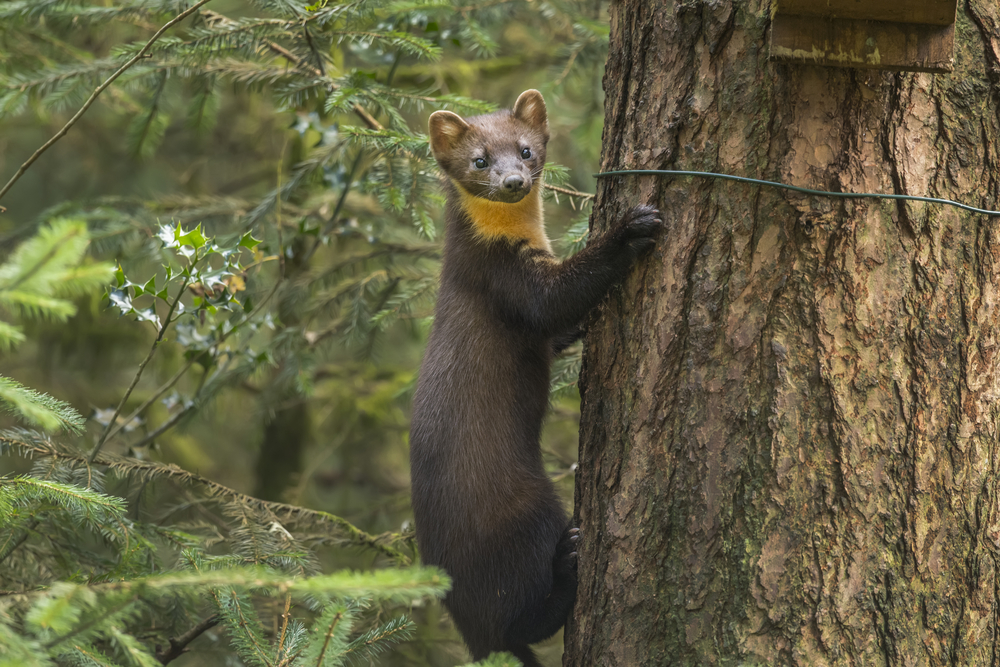
The news that Pine Martens have been released into the Forest of Dean is good news – unless you are a Grey Squirrel (you aren’t are you?).
The evidence is strong, and growing, that native Pine Martens see off non-native Grey Squirrels (and where they exist, allow Red Squirrels to recapture the woods) – see this blog I wrote about it in 2015.
I’ve written about this in my next Birdwatch column (mammals – in Birdwatch? Controversial or what?!) so I won’t say that much more about it, but it is worth noting here the involvement of Forestry England in this real conservation project, and in that other exciting real conservation project the reintroduction of White-tailed Eagles to the south coast of England. And Forestry England are not the least bit interested in brood meddling of Hen Harriers and have done a sterling job of building up an important Hen Harrier population on their land. Move over Natural England?
Well done to all involved in this project in the Forest of Dean!
[registration_form]
I think they’ve done a rarther good job in the spread & increase of red kites too.
Pine Martens are predatory on most nesting birds if they find them, but so too are grey squirrels. I wonder if as the population of martens goes up and the qrey squirrel population goes down if this will help or hinder nesting birds?
If it’s a case of a native species or an alien species I know which one I’d prefer.
Either my geography is rustier than I thought, or Forestry England have done a sterling job
Eh?
There is huge scope for the release and establishment of Pine Marten in many more areas of the UK. The South of Scotland populations have not spread, possibly due to trapping (not required to be reported) in the surrounding areas. The new trapping Scottish regulations which are somewhat more discriminatory and be used less may well assist in this matter. The fact that animals are regularly seen in many areas leads me to believe that these may only be dispersing males, which will not provide an expanding area. The females do not need to travel any great distance to find a territory, and don’t.
Carbofuran sales to farmers in the area have probably already skyrocketed, sadly.
I hope they thrive, I truly do, I just fear they won’t.
If you know somewhere that sells pesticides with carbofuran as an a.i. then tell Inspector Knacker. Or is it the bloke at Trading Standards?
afaik it’s illegal to sell, store or buy it but not to possess it, thanks to Mr Benyon – but that may change in the foreseeable
I think they will do ok in the Forest of Dean, can’t really see carbofuran or any poison being a problem, unless I have missed something.
What with the flocks of Goshawk patrolling the area by day, and these little devils at night, things could be getting sticky for the greys.
And of course there are the (unofficially released) wild boar and ‘official’ beavers in the FoD too. A new pair of the latter have been released after the initial one was removed for possible contact with a parasite. This is one of no less than four projects with beavers in England specifically to see how well they can reduce flood risk – these projects are in addition to the ones at Ham Fen, and the wild and enclosed populations in Devon. Imagine how much a healthy population of beavers in at least partially reforested uplands would do to reduce the numbers of homes having to be mopped out and their soggy contents being sent to landfill? The 2005 Carlisle flood cost 400 million quid, not many trees and certainly no beavers in that part of the world. The same folk playing this down and in fact trying to vilify the beaver are the same ones who don’t like pine martens either. Try getting a gamekeeper to admit pine marten are good for red squirrels, more chance of getting blood out of a stone – it must really, really f****** annoy them a predator being a conservation boon!!!